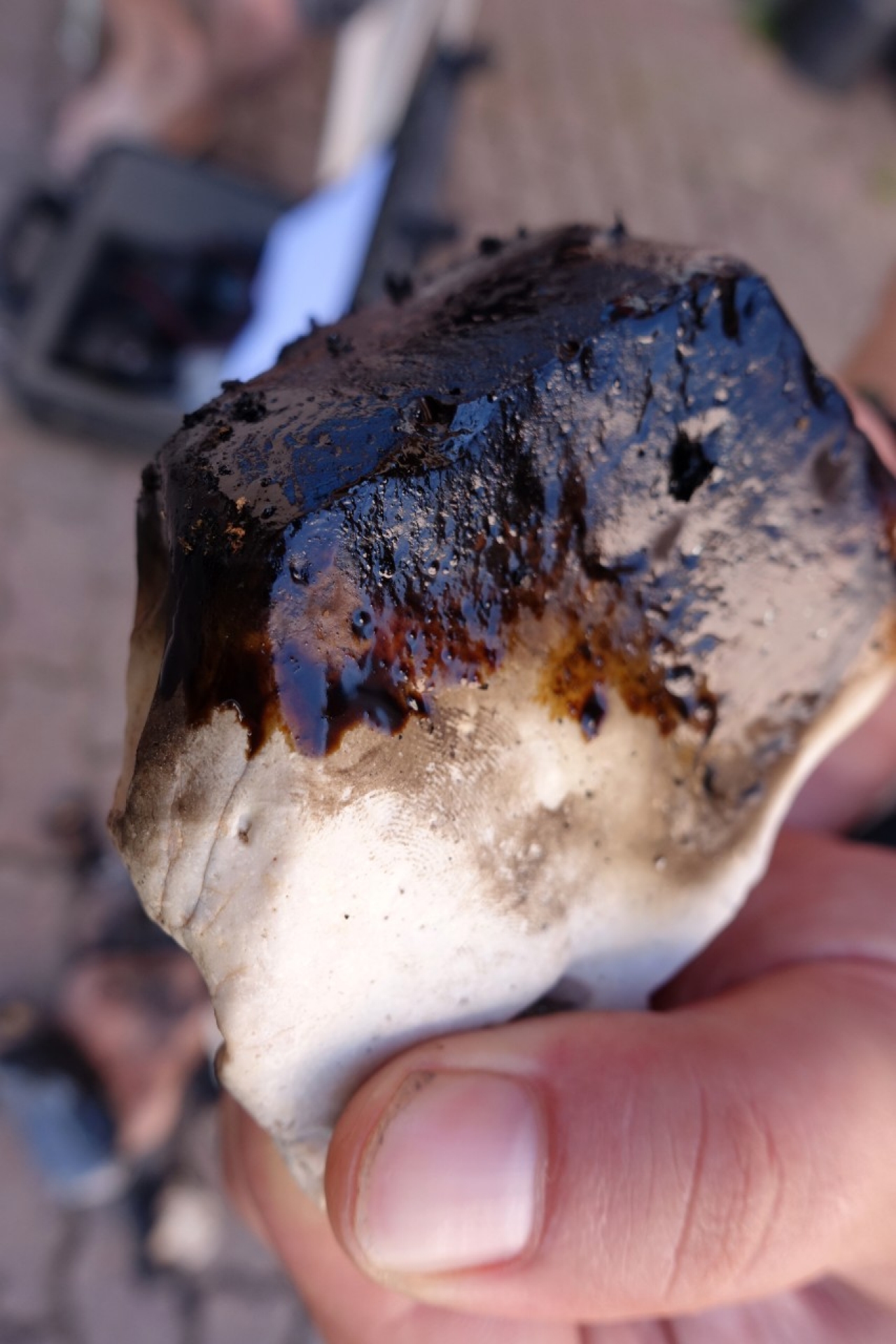Neanderthals and other early humans produced a tarry glue from birch bark to make tools and because modern anthropologists think birch tar could only be created through a complex process in which the bark had to be heated in the absence of air, they used that as proof of a high level of cognitive and cultural development.
But a new study shows that there is a very simple way to make the glue.
Prior researchers had experimented with pits, clay structures, ash mounds, and metal and ceramic vessels as means to heat the bark in the absence of oxygen. Instead, this research team experimented with ordinary materials available in the Stone Age. They collected cut fresh birch bark or dead bark in the forest and burned it near flat river stones. After three hours, the process yielded a usable amount of a black sticky material.

After burning the birch bark on stone, the stone is covered with tar. Credit: University of Tübingen, Claudio Tennie
The tar could easily be scraped off the surface of the stones. Its molecular characteristics were similar to archaeological samples from Neanderthal sites and, more important, it formed a stronger glue than tar produced in more complex oxygen-free processes.
The team used their adhesive to make a wood-scraping tool and turned to a robot that used force-control technology. Their robot arm dragged the tool with a precision that humans cannot emulate over 170 strokes. The approach also allowed the researchers to measure the effects with precision: The tool showed no weakening of the adhesive bond.
In another test, the researchers used the adhesive to stick a stone scraper to a wooden handle, as the Neanderthals had done. Iovita was able to scrape the tough outer membrane from the thigh bone of a calf.
The researchers say this method of making birch tar is so simple that early humans could have easily discovered it by accident in the course of their everyday activities. The production and use of birch tar can therefore no longer serve as an indicator of modern or complex behavior.






Comments